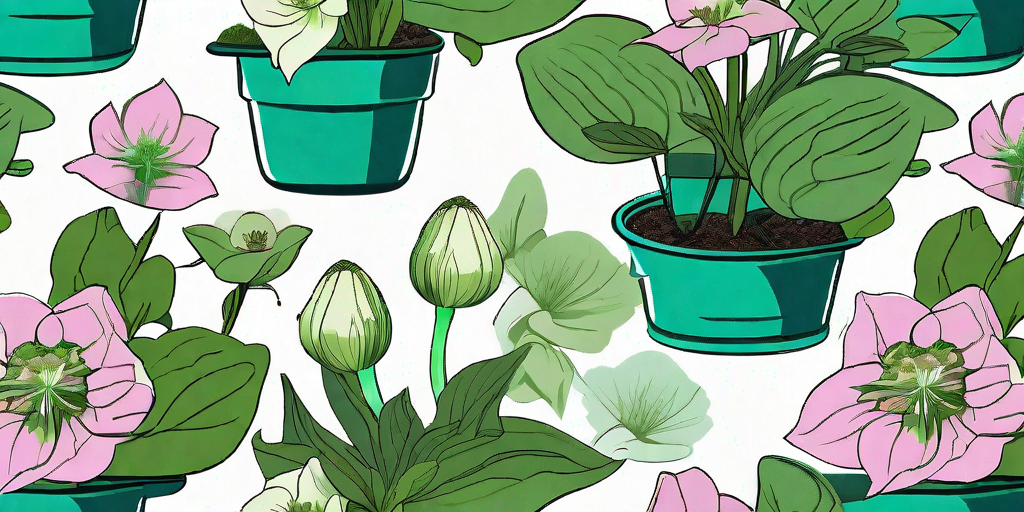
If you're looking for a plant that's as hardy as a mountain goat, as resilient as a cockroach, and as beautiful as a supermodel, then hellebores are your best bet. These perennial beauties are the star of the winter garden, blooming when everything else is hibernating. But how do you propagate these botanical wonders? Well, buckle up, because we're about to embark on a horticultural adventure.
What are Hellebores?
Before we dive into the nitty-gritty of propagation, let's take a moment to appreciate the hellebore in all its glory. Also known as the Christmas or Lenten rose, hellebores are a genus of perennial plants in the family Ranunculaceae. They're native to Europe and Asia, but they've made themselves at home in gardens around the world.
What sets hellebores apart is their timing. While most plants are just waking up from their winter slumber, hellebores are already strutting their stuff. Their flowers, which range from white to purple to green, bloom in the dead of winter, providing a much-needed splash of color in the garden.
Propagation: The Basics
Now, let's get down to business. Propagating hellebores is a bit like baking a cake. You need the right ingredients, the right conditions, and a bit of patience. But don't worry, we've got you covered.
There are two main methods of hellebore propagation: division and seed sowing. Division is the quickest and easiest method, but seed sowing can be more rewarding. It's like the difference between buying a cake from the store and baking one from scratch. Both will satisfy your sweet tooth, but there's something special about a homemade cake.
Propagation by Division
Division is the horticultural equivalent of mitosis. You take one plant and split it into two. It's quick, it's easy, and it's a great way to multiply your hellebore collection.
Here's how you do it:
- Choose a mature hellebore plant. The best candidates for division are at least three years old and have a healthy root system.
- Dig up the plant. Be careful not to damage the roots.
- Using a sharp knife, divide the plant into sections. Each section should have at least one bud and a healthy root system.
- Replant the divisions. Make sure to water them well and keep them in a shady spot until they're established.
Propagation by Seed Sowing
Seed sowing is a bit more involved, but it's a great way to grow a diverse range of hellebores. Plus, there's nothing quite like the thrill of seeing a seedling sprout from a seed you've sown.
Here's how you do it:
- Collect seeds from a mature hellebore plant. The best time to do this is in late spring or early summer, when the seed pods are ripe but not yet open.
- Sow the seeds in a seed tray filled with a mix of compost and perlite. Cover the seeds with a thin layer of compost.
- Place the seed tray in a cold frame or a shady spot in the garden. Hellebore seeds need a period of cold stratification to germinate, so don't be tempted to bring them inside.
- Wait for the seeds to germinate. This can take anywhere from a few weeks to a few months, so be patient.
- Once the seedlings are large enough to handle, transplant them into individual pots.
Common Hellebore Problems and How to Solve Them
Even the hardiest plants have their Achilles' heel, and hellebores are no exception. But don't worry, we've got the solutions to the most common hellebore problems.
Problem: Black Death
Despite its ominous name, Black Death is not the end of the world. It's a viral disease that causes black streaks on the leaves and stems of hellebores. The best way to deal with Black Death is to remove and destroy the affected plants to prevent the disease from spreading.
Problem: Leaf Spot
Leaf spot is a fungal disease that causes brown or black spots on the leaves of hellebores. The best way to prevent leaf spot is to keep the leaves dry and ensure good air circulation around the plants. If your hellebores are affected, remove and destroy the infected leaves.
FAQs about Hellebores
Got questions? We've got answers. Here are some of the most frequently asked questions about hellebores.
Are hellebores toxic?
Yes, hellebores are toxic if ingested. So, keep them out of reach of children and pets.
Do hellebores need sun or shade?
Hellebores are shade-loving plants, but they can tolerate some sun. However, they prefer a spot with dappled shade.
Do hellebores need a lot of water?
Hellebores are drought-tolerant plants, but they do appreciate a drink during dry spells. Just make sure not to overwater them, as they don't like wet feet.
Conclusion
So there you have it, the foolproof guide to propagating hellebores. Whether you're a seasoned gardener or a green-thumbed newbie, we hope this guide has inspired you to add these winter wonders to your garden. Remember, hellebores are like a good wine, they get better with age. So, be patient, and you'll be rewarded with a garden full of blooms when everything else is asleep. Happy gardening!















